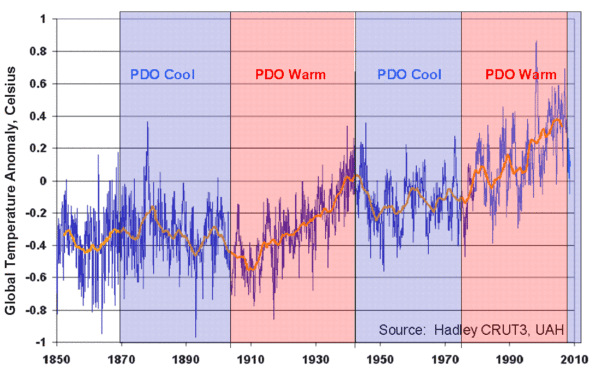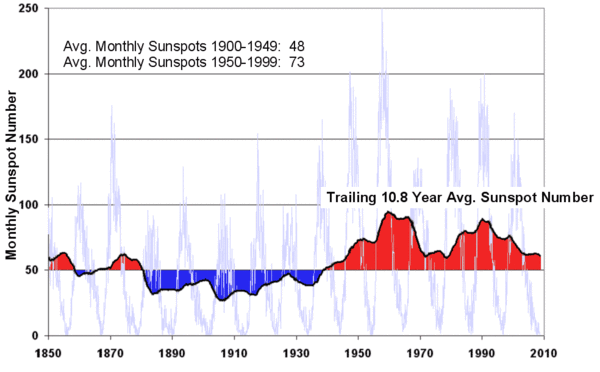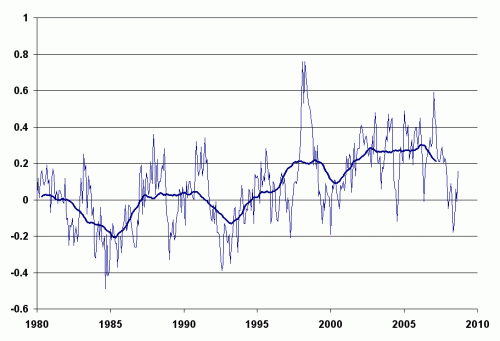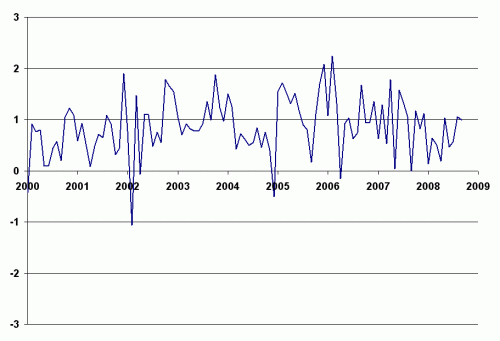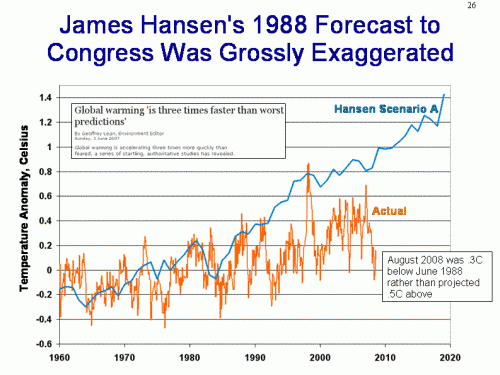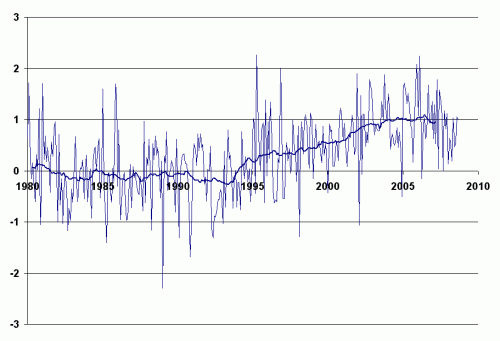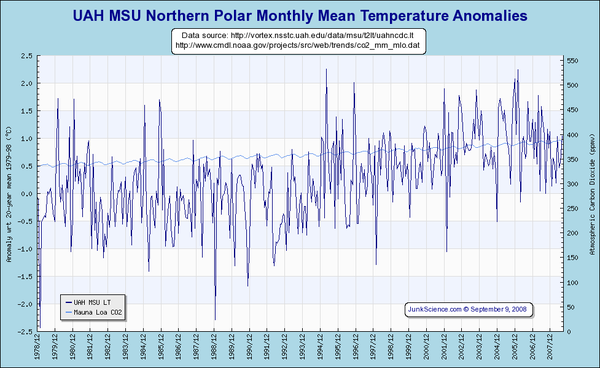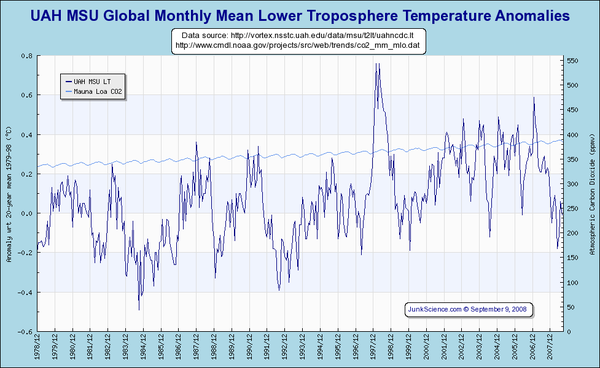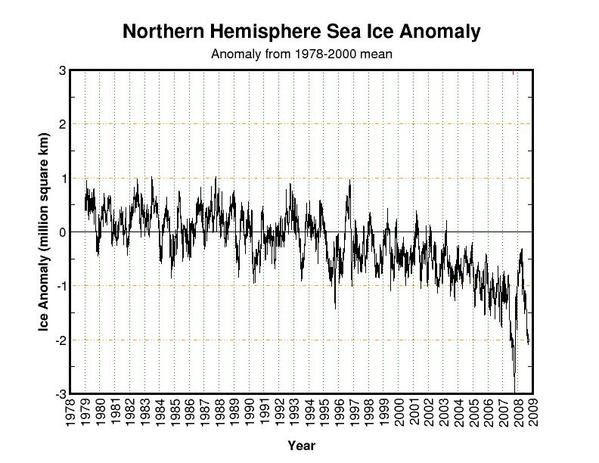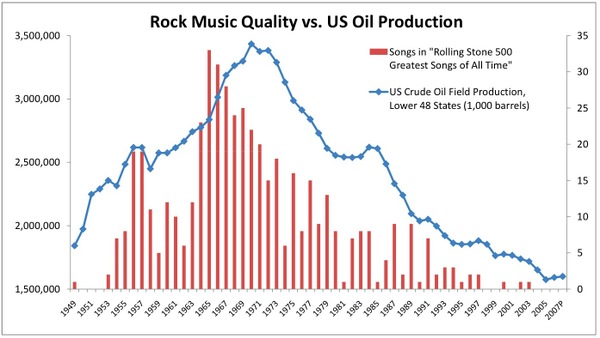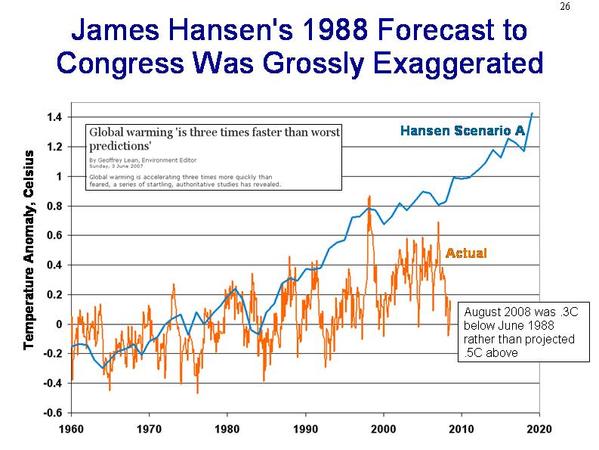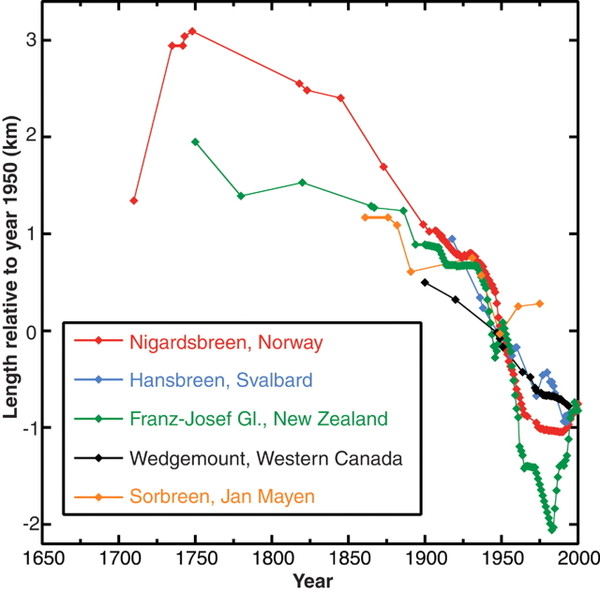I do not claim that urban heat island effects are the only cause of measured surface warming — after all, satellites are largely immune to UHI and have measured a (small) warming trend since they began measuring temperature in 1979.
But I do think that the alarmist efforts to argue that UHI has no substantial, uncorrectable effect on surface temperature measurement is just crazy. Even if one tries to correct for it, the magnitude can be so substantial (up to 10 degrees or more F) that even a small error in correcting for the effect yields big errors in trying to detect an underlying warming signal.
Just as a quick example, let’s say the urban heat island effect in a city can be up to 10 degrees F. And, let’s say by some miracle you came up with a reliable approach to correct for 95% of this effect (and believe me, no one has an approach this good). This means that there would still be a 0.5F warming bias or error from the UHI effect, an amount roughly of the order of magnitude of the underlying warming signal we are trying to detect (or falsify).
When my son and I ran a couple of transects of the Phoenix area around 10PM one winter evening, we found the city center to be 7 to 10 degrees F warmer than the outlying rural areas. Anthony Watts did a similar experiment this week in Reno (the similarity is not surprising, since he suggested the experiment to me in the first place). He too found about a 10 degree F variation. This experiment was a follow-on to this very complete post showing the range of issues with surface temperature measurement, via one example in Reno.
By the way, in the latter article he had this interesting chart with the potential upward bias added by an instrumentation switch at many weather stations
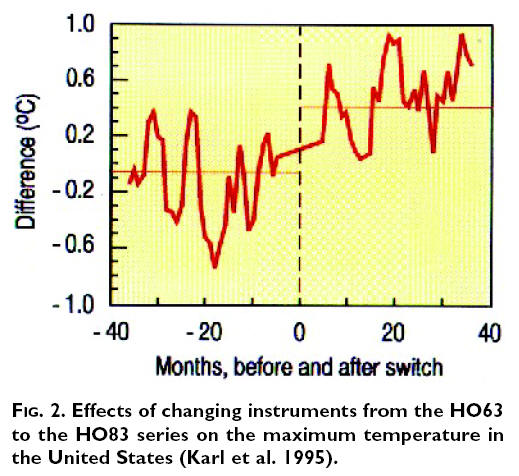
This kind of thing happens in the instrumentation world, and is why numbers have to be adjusted from the raw data (though these adjustments, even if done well, add error, as described above). What has many skeptics scratching their heads is that despite this upward bias in the instrumentation switch, and the upward bias from many measurement points being near growing urban areas, the GISS and NOAA actually have an increasingly positive adjustment factor for the last couple of decades, not a negative one (net of red, yellow, and purple lines here). In other words, the GISS and NOAA adjustment factors imply that there is a net growing cooling bias in the surface temperature record in the last couple of decades that needs to be corrected. This makes little sense to anyone whose main interest is not pumping up the official numbers to try to validate past catastrophic forecasts.
Update: The NOAA’s adjustment numbers imply a net cooling bias in station locations, but they do have a UHI correction component. That number is about 0.05C, or 0.03F. This implies the average urban heat island effect on measurement points over the last 50 years is less than 1/300th of the UHI effect we measured in Reno and Phoenix. This seems really low, especially once one is familiar with the “body of work” of NOAA measurement stations as surveyed at Anthony’s site.

